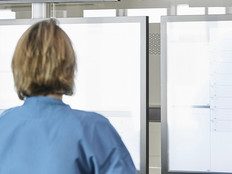In California’s Imperial Valley, El Centro Regional Medical Center sought out Verkada for a cloud-based solution to scale video security across its 165-bed hospital and nine other facilities.
Like many healthcare organizations, the medical center had endured its share of dangerous situations over the years, says Darryl Mark, associate administrator for information services.
“Patients attacking employees, disgruntled family members,” he adds. “We had a lot of incidents where our security team would respond, but we’d rarely have reliable insight into what happened because we didn’t have any cameras set up.”
In late 2019, the healthcare system turned to Verkada and began installing cameras in its outpatient facilities. The process went quickly at first, Mark says, but they were forced to pause as the COVID-19 pandemic picked up. Their final installations, in the hospital itself, are slated for completion in 2021.
Safety and Security at Scale for Healthcare
The new technology has already proved its value where it is in place at El Centro Regional Medical Center, Mark says. At one site, for example, the cameras recorded footage of a visitor stashing contraband in the facility’s bathrooms ahead of a scheduled visit by local prisoners. “Our environmental services people were finding these things, and they had an idea who might have put them there, but they could only remember what the individual was wearing, not what she looked like.”
Using an analytics tool that is part of their Verkada system, staff searched surveillance video with the details they knew, Mark says. “We put in the clothing parameters, and it pulled her right up. Then all we did was send the footage to law enforcement, and they used it as part of their investigation.”
As his team members deal with security during the pandemic, Mark says, they’re always finding new places across the organization where additional cameras are needed.
To handle a recent surge in local infections, for example, they had to put up tents so patients could be seen without having to wait in line inside. “That was a round-the-clock operation, and it required a lot of equipment to make it happen,” he says. But soon after the tents were installed, there were reports of worrisome patient behavior and at least one incident where a visitor tried to steal supplies.
DISCOVER: Why does healthcare need to modernize its physical security strategy?
“Putting cameras there was an easy decision,” Mark says. “But the best part was, it was easy to do.”
Most hospitals, Sarnese adds, had installed cameras well before the pandemic, but “they’re just using them in different ways now, and they’re using them in combination with other technologies.”
A growing number of organizations, for example, are using facial-recognition technology to better control access to restricted spaces.
“And now, with the pandemic, they’re also using it to determine if you’re wearing a mask,” Sarnese says. A visitor who refuses to wear a mask would never make it through the door, he adds, which could prevent a confrontation and the possibility that an argument could turn to something worse.
Better Security Tools for Better Control
At the Martin Luther King Jr. Community Hospital in Los Angeles, Support Services Director Mark Reed hopes to avoid the trend of rising workplace violence in healthcare.
“We’re definitely dealing with new issues and problems, like people who won’t wear masks and get aggressive,” Reed says. “But we’ve also seen drastic reductions in incidents overall, and that’s probably because of our security program.”
The hospital’s security program was overhauled in 2019, not long before the start of the pandemic. In addition to increased staff training and the hiring of experienced security personnel, the project focused on using state-of-the-art technologies, including two important upgrades to the hospital’s video surveillance system.
Until that point, Reed says, the hospital had relied on a third-party security team to monitor its fleet of Axis Communications network cameras installed in halls and entranceways. But now it hoped to bring camera management in-house and needed a way to do it both affordably and effectively.
“The biggest thing was that our video system wasn’t integrated with our access control system,” Reed says. “We wanted them to be able to talk to each other and not be isolated in their own silos.”












